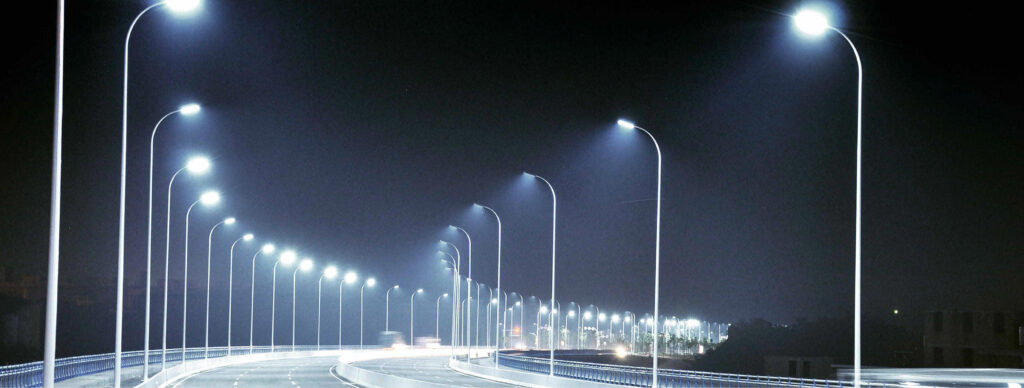Residents and authorities in Guwahati, Assam, are grappling with a puzzling situation: streetlights that remain illuminated around the clock. The 24×7 operation of streetlights has raised concerns about energy wastage, increased carbon footprint, and unnecessary expenditure.
The Lighting Anomaly
Several areas of Guwahati have been experiencing a peculiar situation where streetlights that are meant to provide illumination during the night continue to stay on during the day. This abnormal operation has led to questions from concerned citizens about the reasons behind this phenomenon.
Energy Consumption and Carbon Footprint
One of the primary concerns raised by the community is the unnecessary consumption of energy due to the continuous operation of streetlights. Guwahati, like many other cities, is striving to reduce its carbon footprint and energy consumption. The 24×7 operation of streetlights goes against these sustainability goals.
Financial Burden
In addition to the environmental implications, there is also a financial burden associated with keeping streetlights on continuously. The cost of electricity and maintenance for streetlights is borne by the local authorities. The continuous operation adds to the overall expenditure, which could be better utilized for other municipal services.
Possible Causes
The reasons behind the continuous operation of streetlights in Guwahati are still under investigation. Several factors could contribute to this anomaly:
- Technical Glitches: Malfunctions or technical glitches in the streetlight control systems could result in lights staying on during the day.
- Lack of Automation: Some areas may lack automated systems that can adjust lighting levels based on natural light conditions, leading to continuous operation.
- Maintenance Issues: Neglect in the maintenance and monitoring of streetlights may result in lights not functioning as intended.
Community Concerns
Residents have voiced their concerns over social media and local forums, urging authorities to address the issue promptly. Also, they emphasize the need for efficient energy use, cost savings, and a reduced carbon footprint.
Efforts to Resolve the Issue
Local authorities are actively working to resolve the streetlight issue. This includes:
- Technical Assessment: Conducting technical assessments of the streetlight systems to identify and rectify any malfunctions.
- Automation Implementation: Installing automated systems that adjust lighting levels based on ambient light conditions.
- Community Engagement: Seeking input and support from the community to report any malfunctioning streetlights.
- Energy Efficiency: Emphasizing energy-efficient practices and a reduction in carbon emissions.
The 24×7 operation of streetlights in Guwahati is a concern that affects energy consumption, the environment, and financial resources. Residents and authorities are working together to address the issue and ensure that streetlights function as intended, providing safety and security while also promoting sustainability. The resolution of this anomaly will lead to better energy efficiency and reduced operational costs, benefiting both the city and its residents.
Residents and authorities in Guwahati, Assam, are grappling with a puzzling situation: streetlights that remain illuminated around the clock. Further, the 24×7 operation of streetlights has raised concerns about energy wastage, increased carbon footprint, and unnecessary expenditure.
The Lighting Anomaly
Several areas of Guwahati have been experiencing a peculiar situation where streetlights that are meant to provide illumination during the night continue to stay on during the day. This abnormal operation has led to questions from concerned citizens about the reasons behind this phenomenon.
Energy Consumption and Carbon Footprint
One of the primary concerns raised by the community is the unnecessary consumption of energy due to the continuous operation of streetlights. Guwahati, like many other cities, is striving to reduce its carbon footprint and energy consumption. The 24×7 operation of streetlights goes against these sustainability goals.
Financial Burden
In addition to the environmental implications, there is also a financial burden associated with keeping streetlights on continuously. The cost of electricity and maintenance for streetlights is borne by the local authorities. The continuous operation adds to the overall expenditure, which could be better utilized for other municipal services.
The reasons behind the continuous operation of streetlights in Guwahati are still under investigation. Several factors could contribute to this anomaly:
- Technical Glitches: Malfunctions or technical glitches in the streetlight control systems could result in lights staying on during the day.
- Lack of Automation: Some areas may lack automated systems that can adjust lighting levels based on natural light conditions, leading to continuous operation.
- Maintenance Issues: Neglect in the maintenance and monitoring of streetlights may result in lights not functioning as intended.
Community Concerns
Residents have voiced their concerns over social media and local forums, urging authorities to address the issue promptly. Also, they emphasize the need for efficient energy use, cost savings, and a reduced carbon footprint.
Efforts to Resolve the Issue
Local authorities are actively working to resolve the streetlight issue. This includes:
- Technical Assessment: Conducting technical assessments of the streetlight systems to identify and rectify any malfunctions.
- Automation Implementation: Installing automated systems that adjust lighting levels based on ambient light conditions.
- Community Engagement: Seeking input and support from the community to report any malfunctioning streetlights.
- Energy Efficiency: Emphasizing energy-efficient practices and a reduction in carbon emissions.
The 24×7 operation of streetlights in Guwahati is a concern that affects energy consumption, the environment, and financial resources. Moreover, residents and authorities are working together to address the issue and ensure that streetlights function as intended, providing safety and security while also promoting sustainability. The resolution of this anomaly will lead to better energy efficiency and reduced operational costs, benefiting both the city and its residents.


